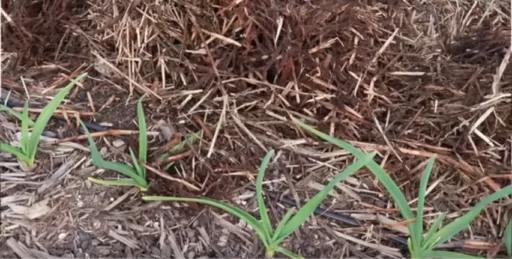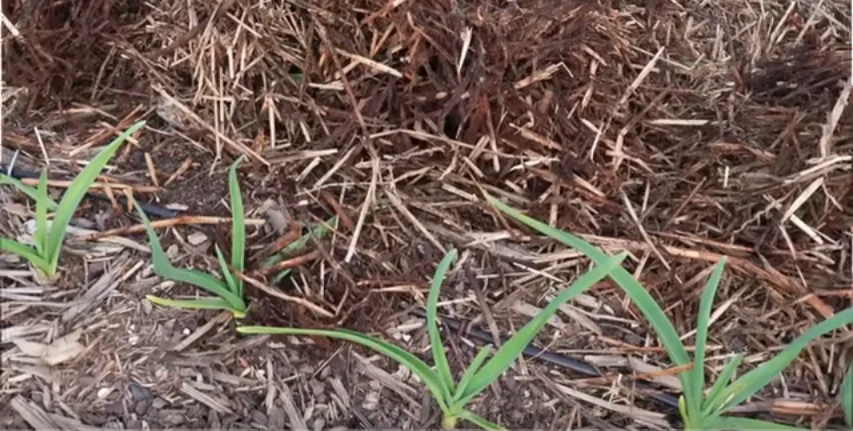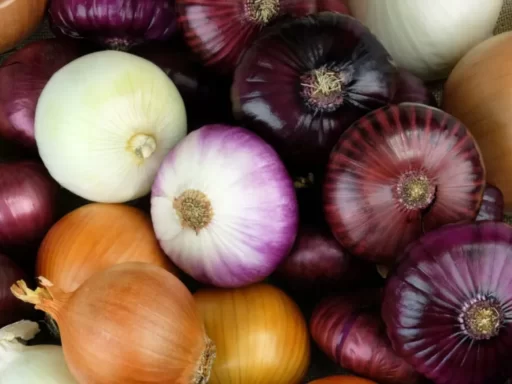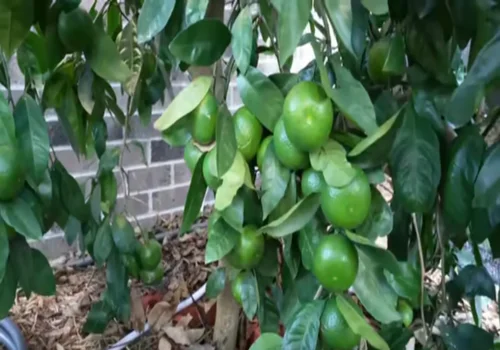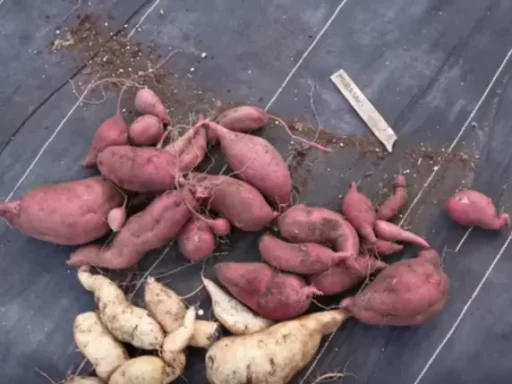As the gardening season winds down and we prepare for winter, many gardeners unknowingly make critical mistakes that can have long-term effects on their garden’s productivity. On this chilly December day on the southeastern coast of North Carolina, it’s time to address one of the most common mistakes that often goes unnoticed: failing to protect your garden soil from the harsh winter sun. This article will explore how not protecting your soil can lead to sterilization and what methods you can use to maintain a healthy, thriving garden soil even during the off-season.
Why Protecting Your Garden Soil in Winter Matters
Garden soil is a living ecosystem, made up of billions of microorganisms like bacteria and fungi that work together to break down organic matter and provide nutrients to your plants. When you leave your garden soil exposed to the sun during the winter months, these microorganisms are left vulnerable to UV rays, which can sterilize the soil, leaving it lifeless. This is why protecting your soil is crucial, even when you aren’t actively growing plants.
While it might seem like the sun isn’t as strong in the winter, prolonged exposure can still have damaging effects. You may be wondering, “Why protect the soil in winter when I don’t even protect it in summer?” Actually, you do—without realizing it.
Natural Protection During the Growing Season
During the growing season, your plants’ roots form a symbiotic relationship with the soil. The roots host beneficial bacteria and fungi, promoting a healthy soil microbiome. In addition, the plants’ leaves act as a natural shade, preventing the sun from baking the soil. In essence, your plants are unknowingly protecting the soil for you during the spring and summer months.
However, once the growing season is over, this natural protection disappears. With no plants to provide cover, the soil is left exposed to the harsh UV rays of the sun, which can bleach and sterilize the soil, leaving it dry and lifeless.
The Consequences of Sterilized Soil
When soil is sterilized by prolonged exposure to the sun, its ability to sustain plant life is significantly diminished. The microorganisms that are essential for healthy plant growth are destroyed, and the top layer of your soil essentially turns to sand. In the following growing season, this can result in sluggish plant growth as it takes weeks or even months for the soil’s microbiome to recover.
The good news is that there are simple steps you can take to protect your soil and ensure that it remains rich and fertile throughout the winter months.
Protecting Soil Method #1: Grow During Winter
One of the best ways to protect your soil during the winter is to continue growing. Even if you aren’t growing crops for harvest, planting a winter cover crop or cold-hardy vegetables can keep the soil active. The roots of these plants will continue to host beneficial bacteria and fungi, supporting the soil’s microbiome even during the colder months.
In addition to keeping the soil active, the plants’ leaves will continue to provide shade, much like they do during the growing season. This natural canopy protects the soil from UV rays and helps maintain the soil’s health.
Protecting Soil Method #2: Mulching
If you’re not interested in growing during the winter, the next best option is to cover your soil with a natural mulch. A good layer of mulch, about 2-3 inches thick, can protect the soil from UV rays and help maintain moisture.
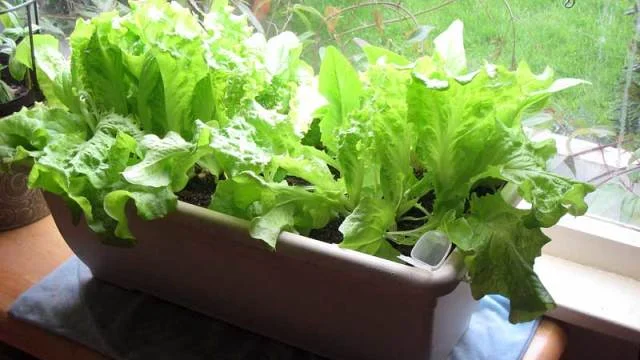
When choosing a mulch, it’s important to use natural materials. Shredded hardwood bark, chopped leaves, grass clippings, or pine straw are all excellent choices. These materials not only protect the soil but also break down over time, adding nutrients back into the soil. Avoid using artificial mulches like dyed wood chips or rubber mulch, as these can introduce harmful chemicals into your soil.
Protecting Soil Method #3: Tarping
If mulching isn’t feasible due to the size of your garden or the availability of mulch, you can also protect your soil by covering it with a tarp. This method prevents UV exposure and preserves the soil’s microbiome throughout the winter. While tarping doesn’t provide the additional benefits of nutrient breakdown like natural mulch does, it’s still an effective way to maintain the soil’s health.
If you choose to tarp, make sure to use UV-resistant tarps to avoid degradation. Cheaper tarps may break down under prolonged sun exposure, leaving plastic debris in your soil.
Larger Gardens and Farmland Solutions
For those with larger earth beds or farmland, protecting your soil may require a different approach. One popular method is to plant cover crops, which are grown specifically to protect the soil and later tilled under to provide organic matter for the next growing season. If cover crops aren’t an option, large UV-resistant tarps (often called silage tarps) can be used to cover significant portions of farmland.
Avoid Mulching With Compost
Some gardeners may wonder if they can use compost as a protective layer for their soil. While compost is an excellent source of organic matter and nutrients, it is not suitable for winter soil protection. Compost left exposed to the sun during the winter will become sterilized, destroying the beneficial bacteria and fungi. Additionally, prolonged exposure to winter weather can wash away the nutrients, making the compost less effective.
Conclusion
Protecting your garden soil in the winter is essential for maintaining healthy, productive soil for the following growing season. By continuing to grow, using natural mulch, or tarping, you can ensure that your soil remains fertile and ready for planting. These simple steps can make a huge difference in your garden’s productivity, ensuring that your plants thrive from the moment you transplant them in the spring.
Frequently Asked Questions
- Why is it important to protect garden soil in the winter?
Garden soil contains beneficial microorganisms that can be sterilized by the sun’s UV rays during the winter. Protecting the soil helps preserve these organisms, ensuring better plant growth the following season. - Can I use artificial mulch to protect my garden soil?
It’s best to avoid artificial mulches like rubber or dyed wood chips, as they can introduce harmful chemicals into the soil. Instead, use natural mulch like shredded bark, grass clippings, or leaves. - What is the best way to protect large areas of garden soil in the winter?
For larger gardens or farmland, consider using a UV-resistant silage tarp or planting cover crops to protect the soil. - Is it okay to leave garden soil exposed during winter?
Leaving soil exposed can lead to sterilization and loss of beneficial microorganisms, which can negatively affect plant growth in the spring. - Can I use compost to protect my soil in the winter?
It’s not recommended to use compost as a protective layer because it can be sterilized by UV rays and lose its nutrients through weathering. - How thick should my mulch layer be to protect the soil?
A mulch layer of 2-3 inches is usually sufficient to protect the soil from UV rays and retain moisture. - Should I tarp my soil if I’m using mulch?
If you’ve mulched your soil, tarping is not necessary. However, tarping can be used if you don’t have access to natural mulch or need additional protection.

